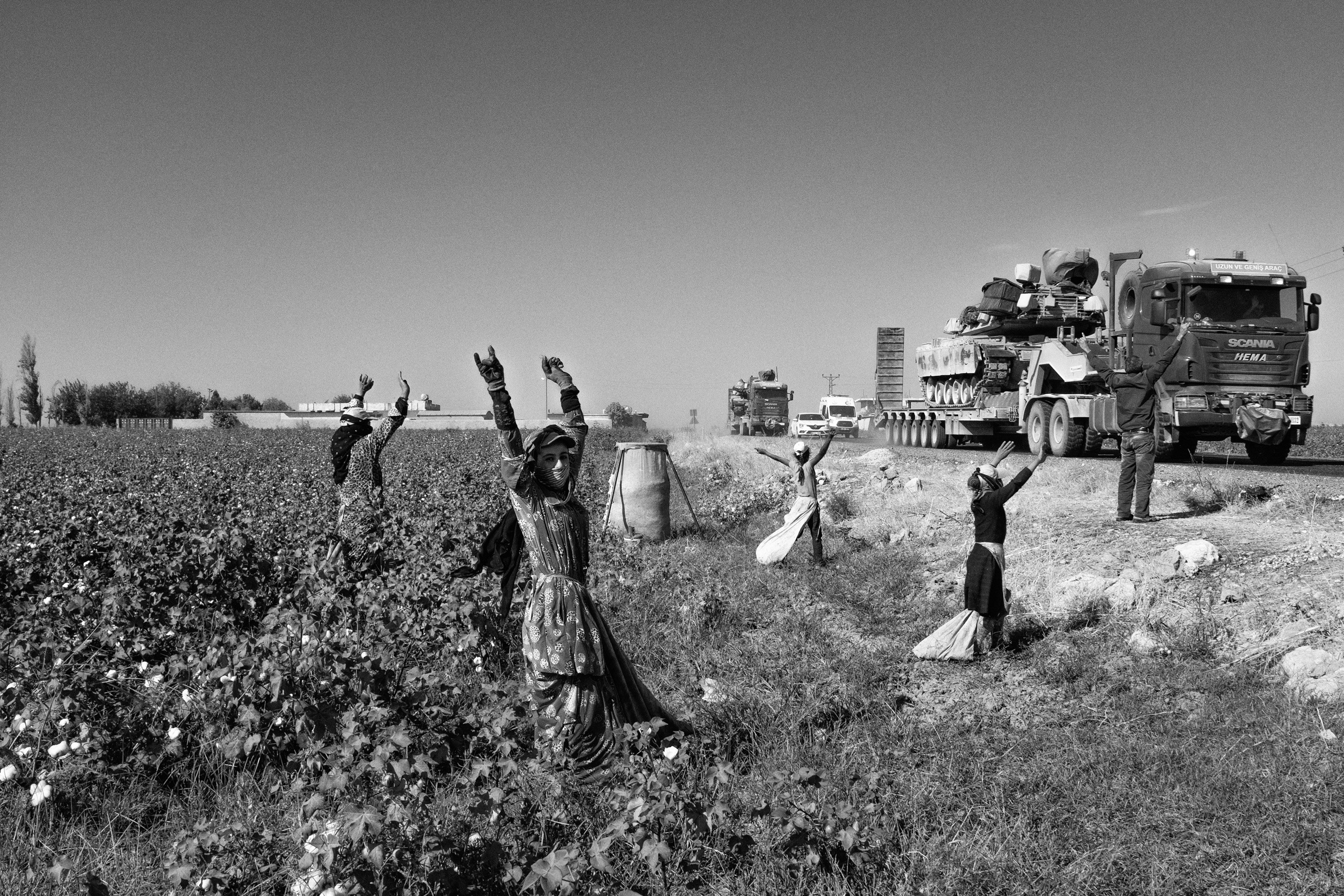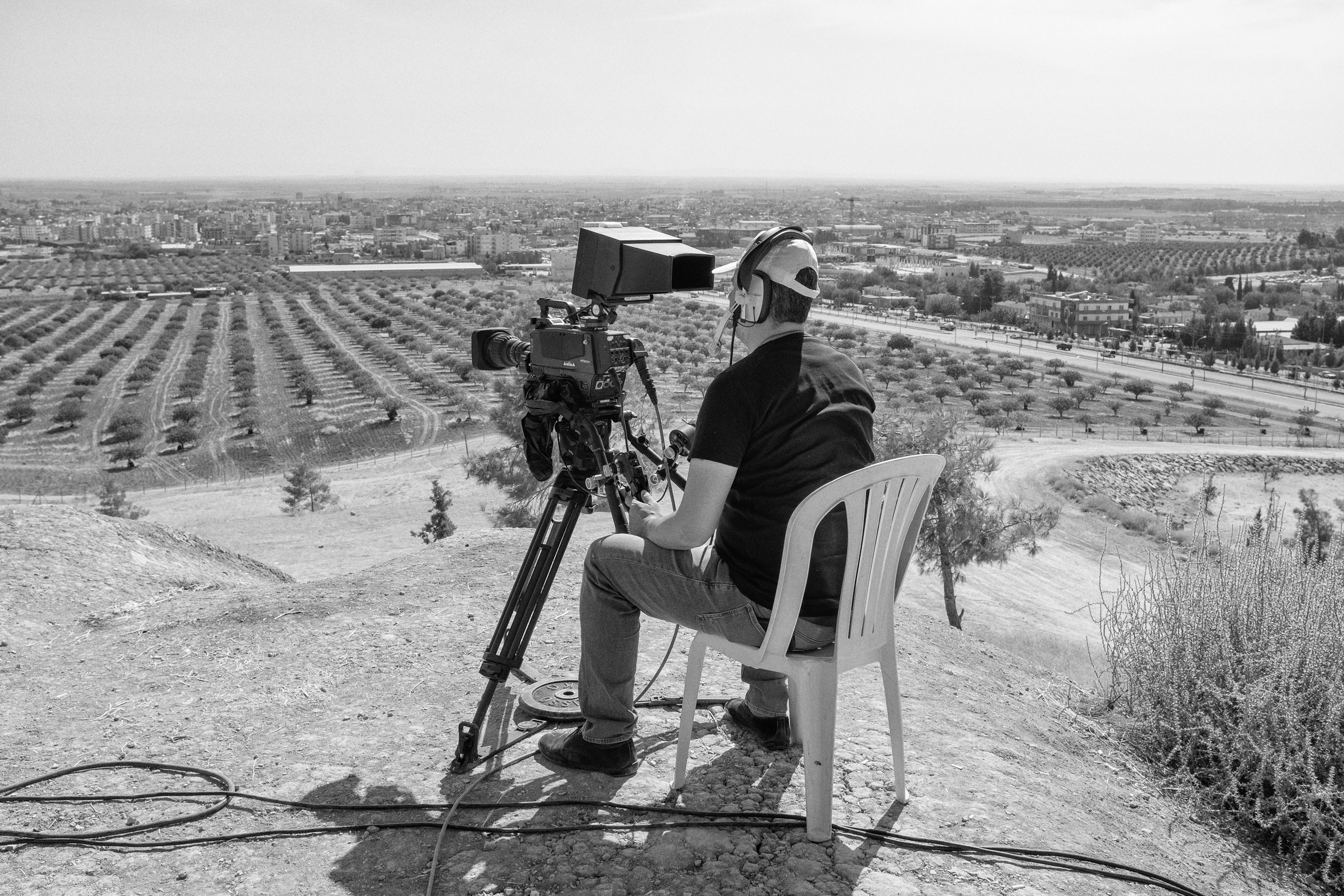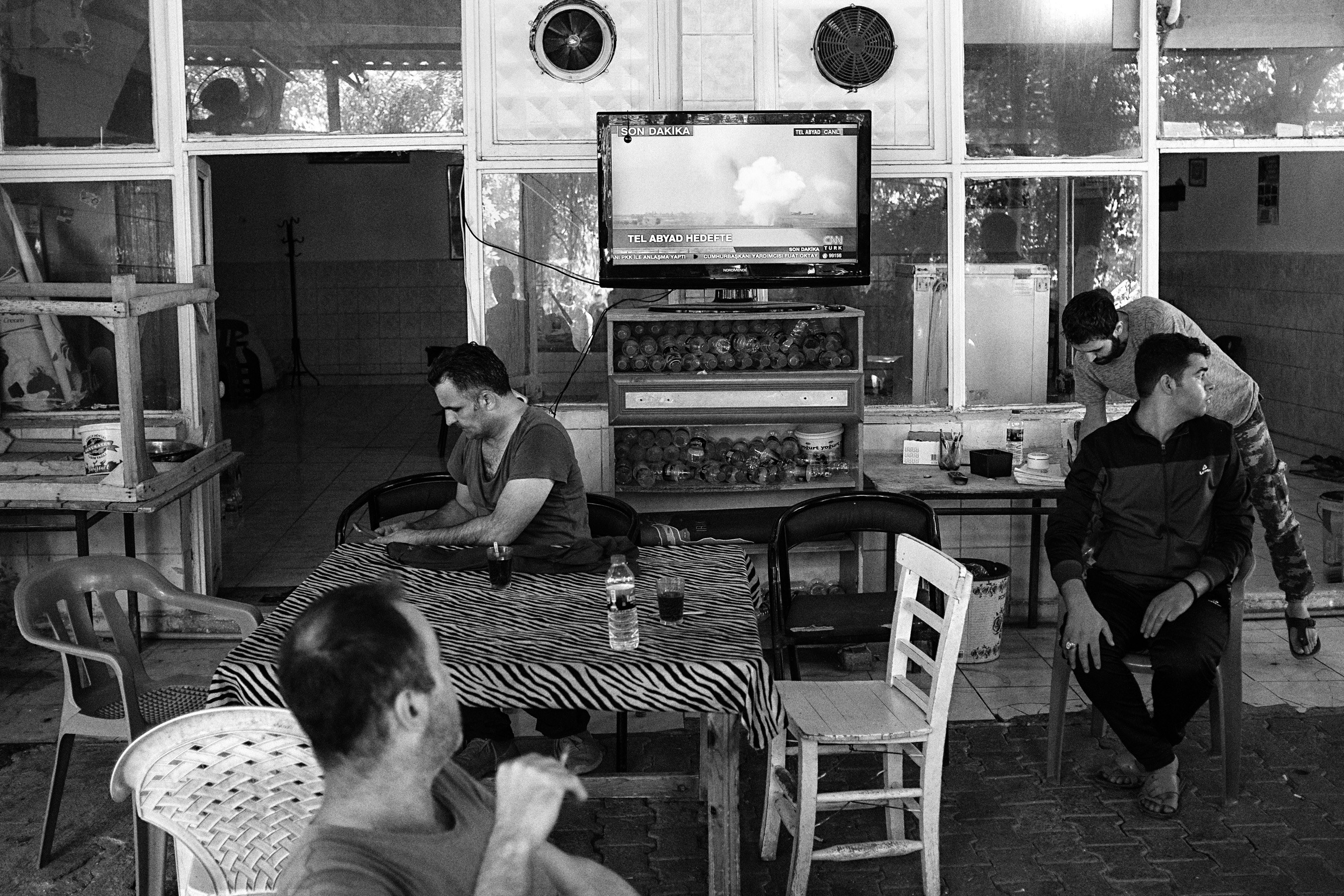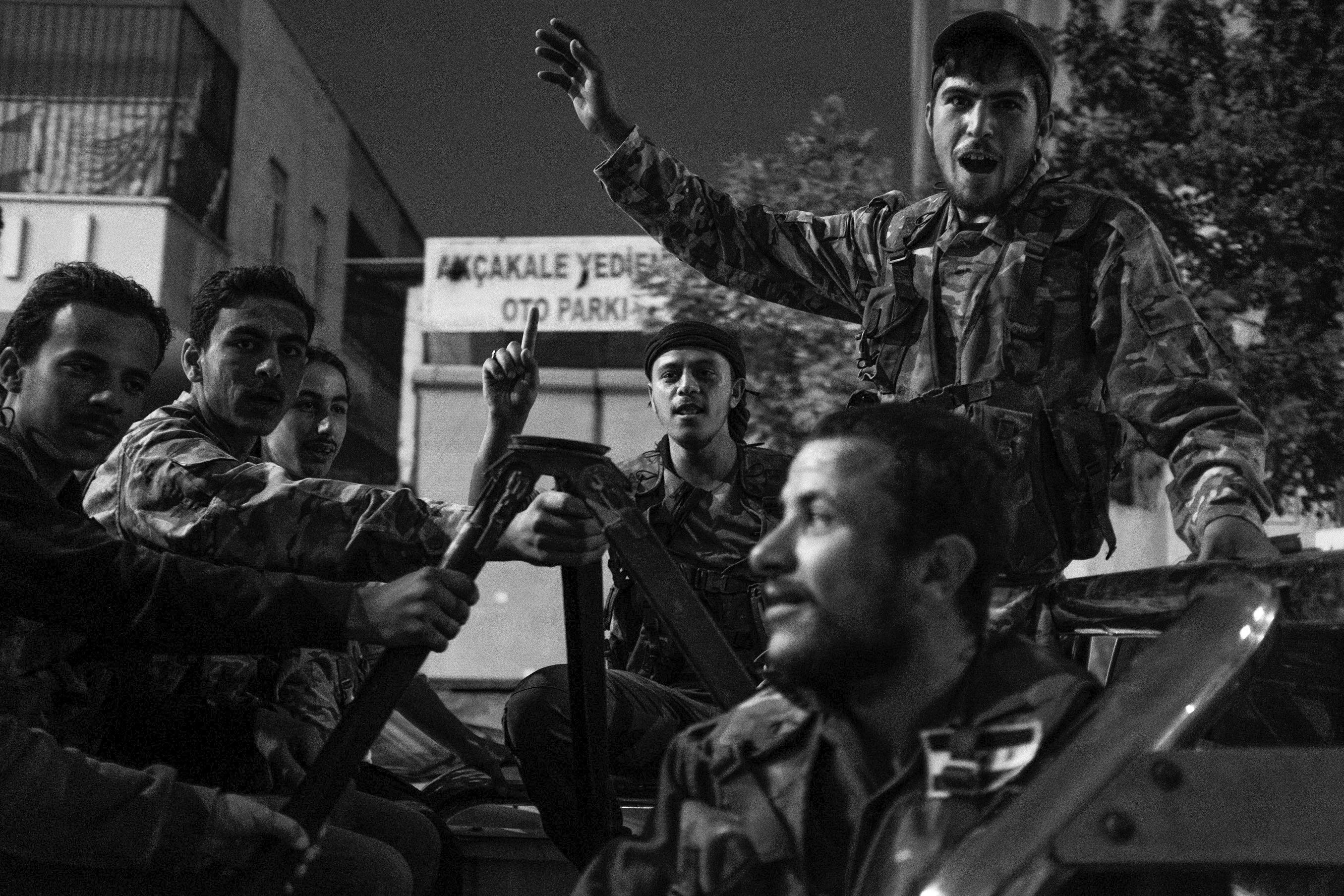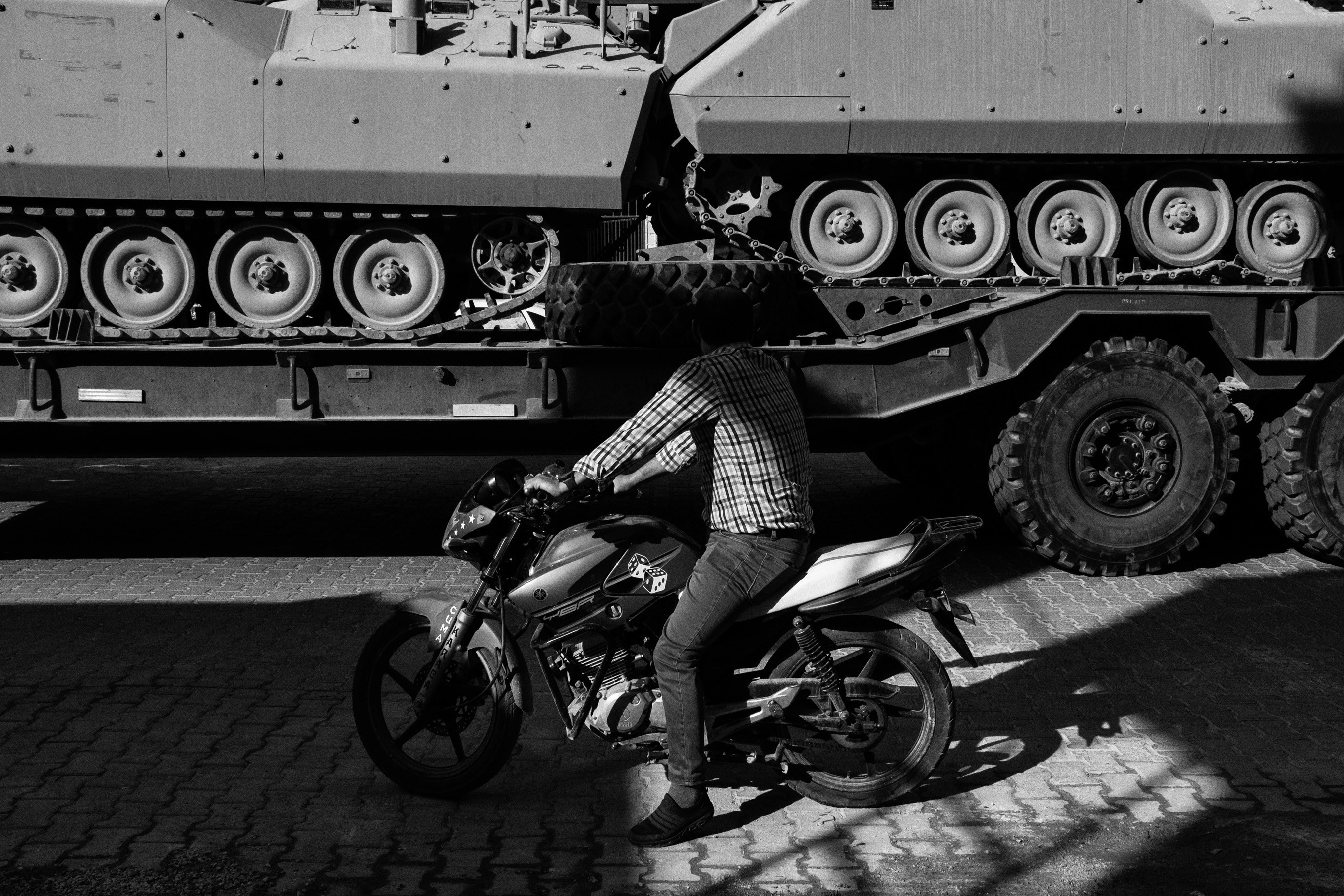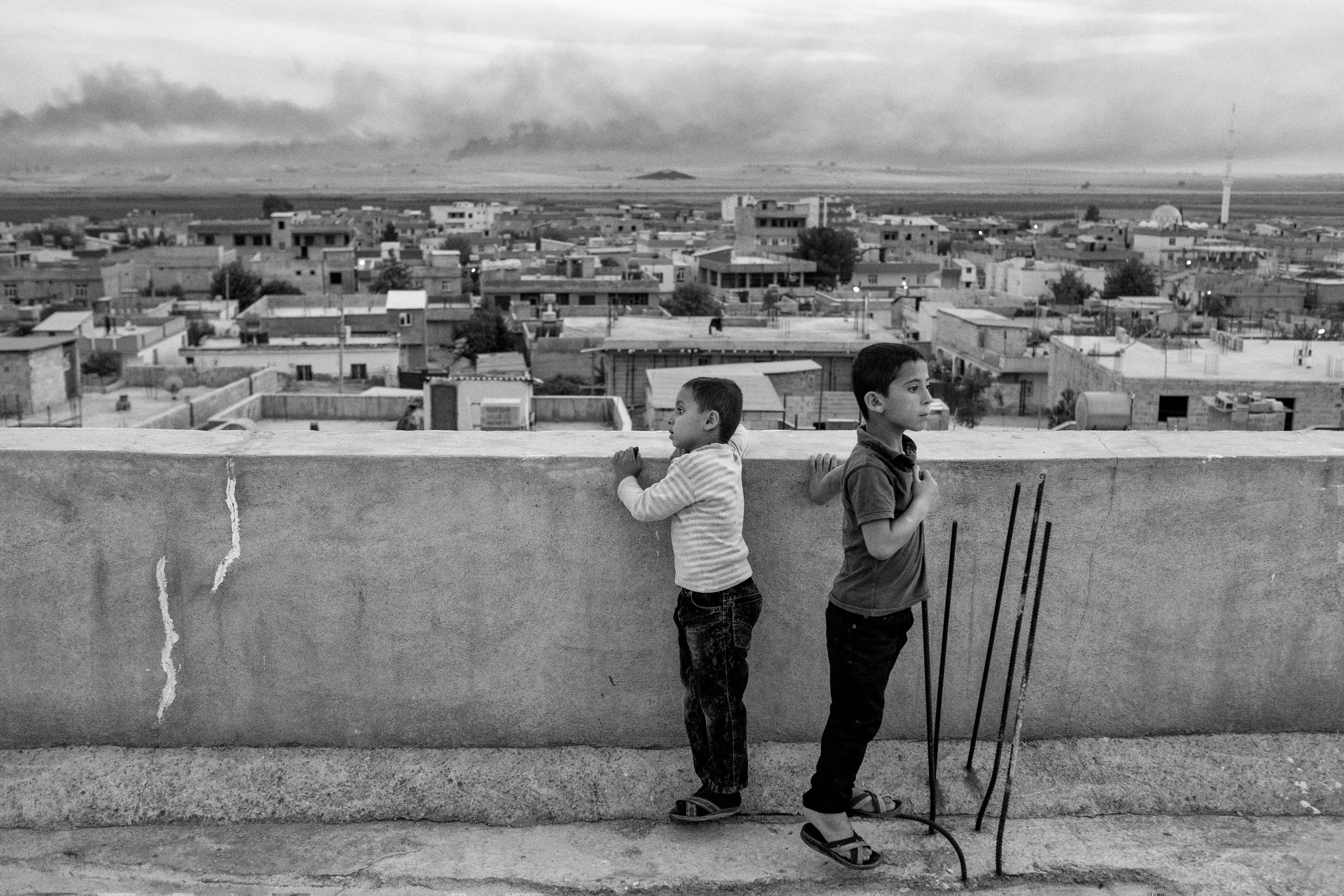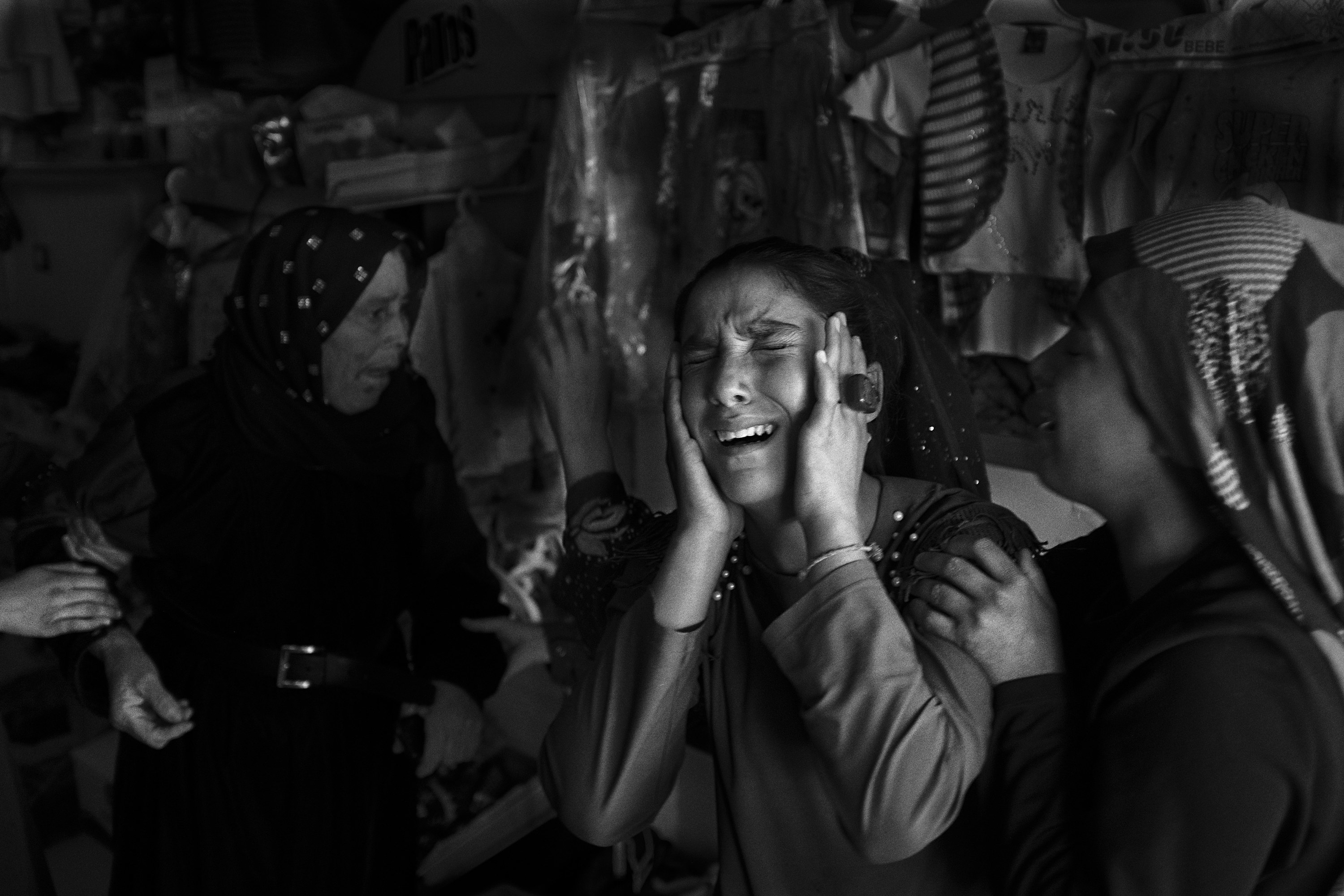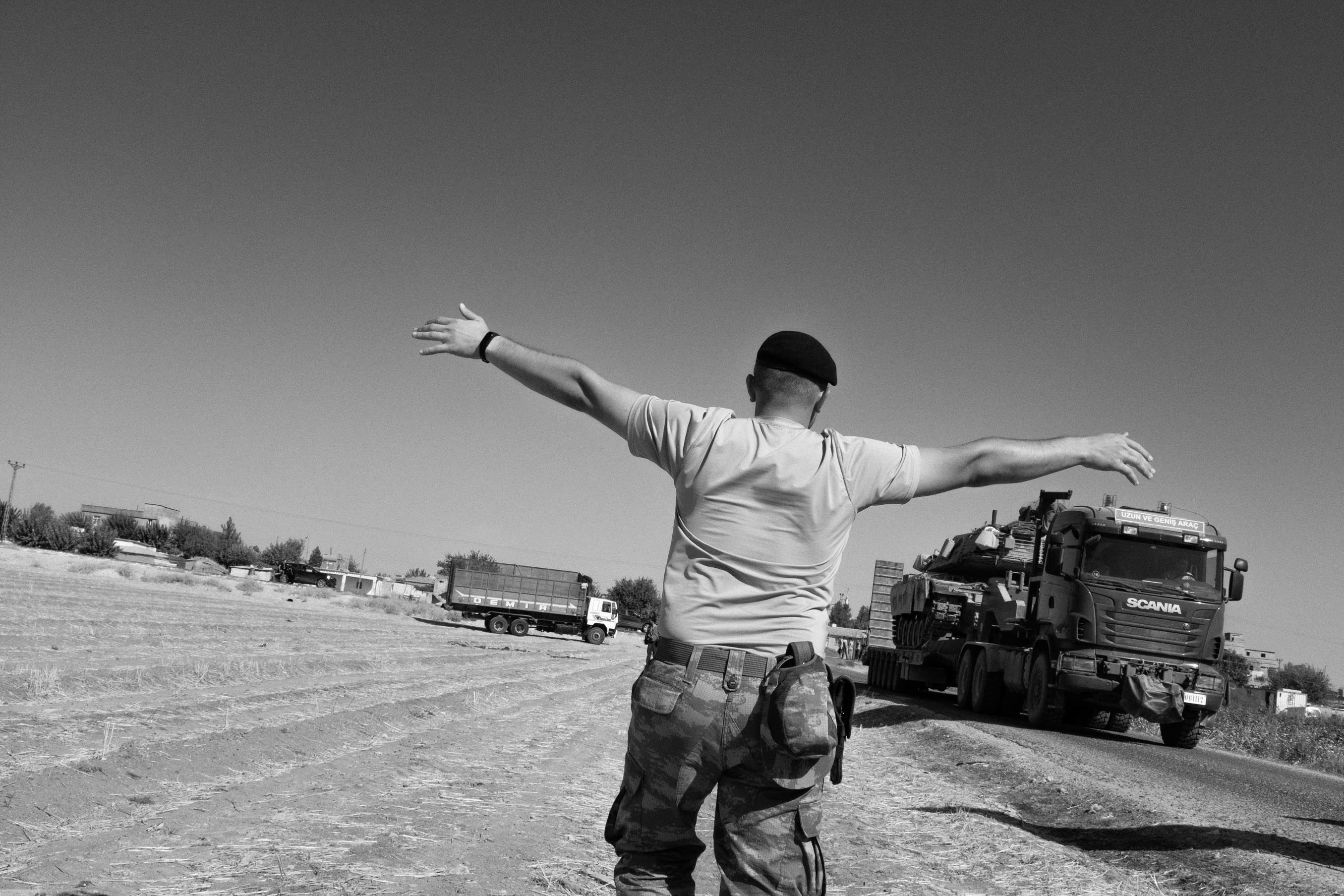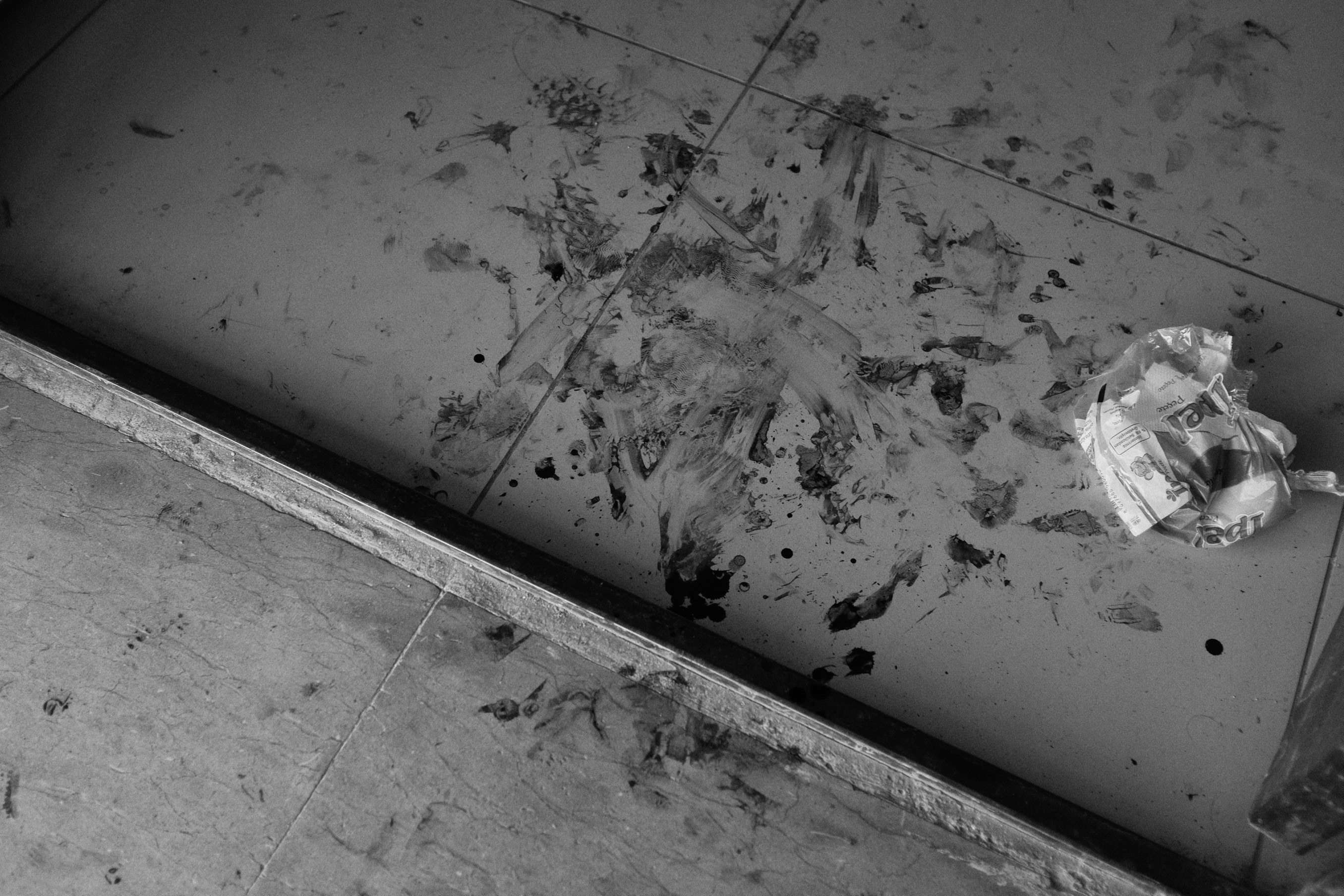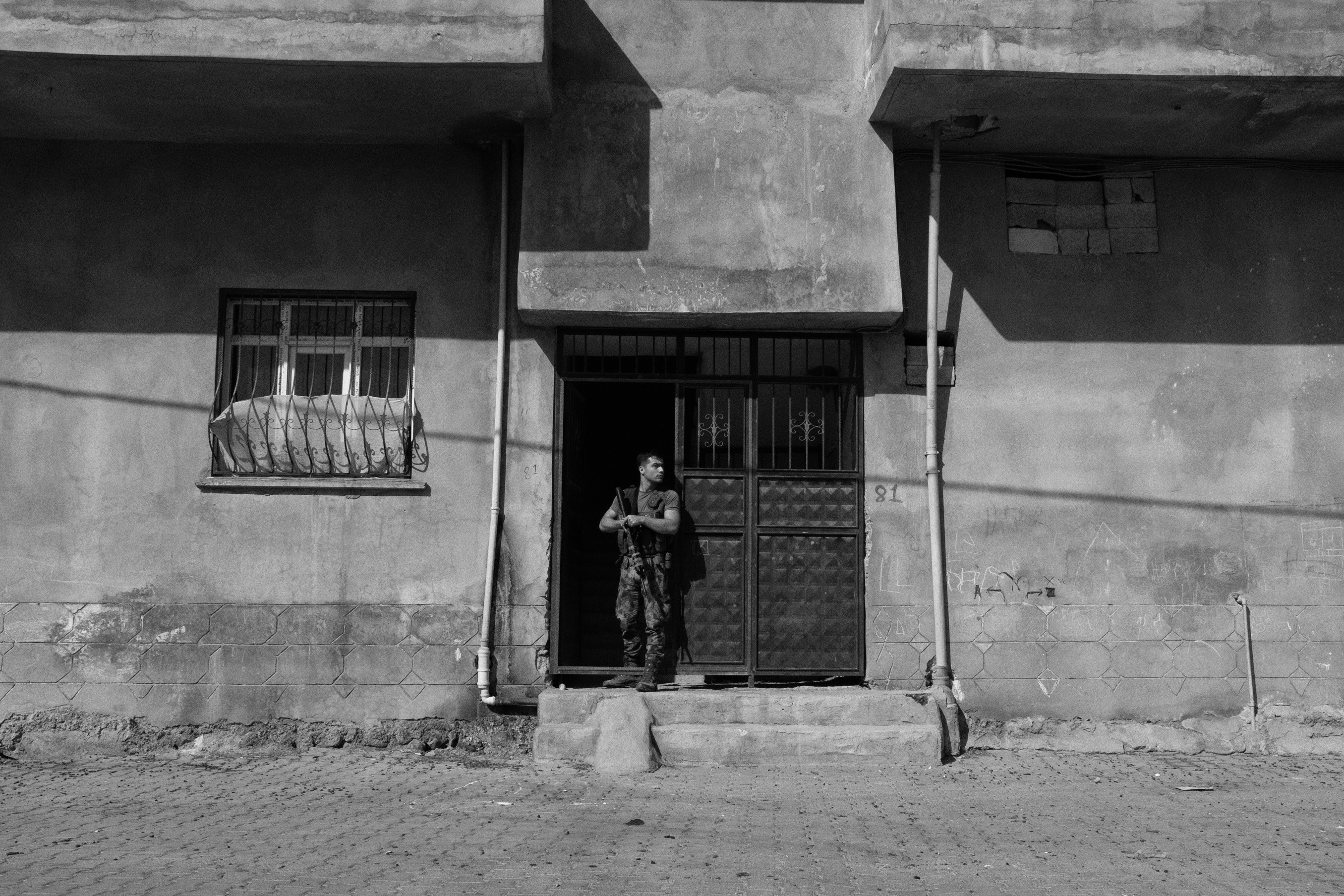Farmers wave while Turkish military vehicles carrying tanks make their way to northern Syria to join ongoing military operations against Kurdish fighters.
Turkey’s incursion into Syria to create a so-called safe zone within 20 miles of the border cuts through so many layers of history that it is difficult to summarize its importance. The border towns on both sides have experienced conflict for years and have the scars to prove it. Over the past century, through changes in leadership and redrawings of the border, this story has repeated itself.
BuzzFeed News spoke with Emin Özmen, a photographer based in Turkey who traveled to the Turkish–Syrian border to report on the effects of the invasion. Before we start, some basic background information:
The Kurds are a Muslim-majority ethnic group who live in territory controlled currently by Turkey, Iran, Iraq, and Syria.
Over the years, there’s been a continuous push from Kurdish leaders for more autonomy, if not independence.
Kurdish civilians have endured multiple crackdowns and massacres over the last century, including in Saddam Hussein’s Iraq and during the Syrian civil war.
The Kurdistan Workers’ Party (PKK) has used violence to advance Kurdish interests. It is a terrorist group in the eyes of Turkey, the United States, and the European Union.
An offshoot of the PKK, the People’s Protection Units (YPG) was one of the US’s main partners in defeating ISIS in Syria.
A TV reporter broadcasts on a hill in the border town of Ceylanpinar, as Turkish military fights with Kurdish rebels in Ras al-Ayn in northern Syria.
People in Akçakale watch television reports on the bombing of Tel Abyad, the city across the Turkish border, on the second day of Turkish military operations against Kurdish fighters.
Emin Özmen: What matters for me is to show what civilians endure, no matter their nationality, religion, etc. Civilians are victims on both sides of the border. Journalism has to show all sides of an event, so my work alone is of course not enough to explain the aftermath of this operation, as I was on Turkish side (geographically), so I documented what happened there. I wish I would have been able to document what happened on the other side of the border too (Syria), but I was not able to do so.
Can you give some context to why Turkey sees the Kurds as a threat, and whether everyone in Turkey agrees with that?
EÖ: It’s such a complicated question, I can only answer for myself. I don’t think that Turkey sees the Kurds as a threat. I would say that Turkey sees the PKK as a threat.It is a very complex conflict that began decades ago.
By the end of World War I and the collapse of the Ottoman Empire, Kurdish society found itself divided in four different countries, separated by walls. This topic alone would need more explanations to understand better, but I don’t pretend to be an expert on that question. The Kurds are the largest ethnic minority in Turkey and compose between 15% and 20% of the population (which is some 14 million to 18 million people).
In Turkey, the PKK, designated a terrorist organization by NATO and the EU, has waged an insurgency against the central government on and off since 1984. The 35-year-old conflict has already taken the lives of over 40,000 people.
Turkish-backed Syrian fighters wave from an armed vehicle going to fight against Kurdish fighters in the northern Syrian city Tel Abyad.
People hide and watch near the border as Turkish tanks shell targets in Tel Abyad in northern Syrian, during the military operation against Kurdish fighters.
I’m Turkish by birth, and I grew up in a culture where the Kurdish issue is ever-present and remains sensitive. Since the beginning of the ‘80s, we are living in a country where there is always conflict — mostly in east and southeastern part of the country, where the situation is always at an emergency level.
The conflict in Syria is a complicated matter, as are the internal politics in Turkey. The Turkish government was never comfortable that the YPG took control in northern Syria; they saw this as a threat that could spread in Turkey. In this context, Turkey started its military operations in northern Syria to disperse it: Euphrates Shield operation in 2016–2017, Olive Branch operation in 2018, and now the Peace Spring operation in October 2019.
A man watches as Turkish military vehicles pass through Akçakale, on the way to northern Syria to join ongoing military operations against Kurdish fighters.
People flee their homes as mortars land in several locations near the border.
How long were you at the border?
EÖ: It became clear Turkey would attempt an incursion into Syria, so I arrived in Akçakale on Oct. 9, a few hours before Turkey launched Operation Peace Spring against Kurdish fighters of the YPG, which control northeast Syria. All the communication and social media were blocked by 4 p.m. No internet, no phones. We learned that Turkey entered Syria through the radio. Very quickly, we started to hear sounds of mortars. Turkish artillery was unleashed, shelling Syrian border towns and villages. Military convoys carrying tanks continued passing the border town all night and other days. I was at the border between Oct. 9 until Oct. 25.
What was the mood like in the town?
EÖ: By the beginning of the operation, the city’s loudspeakers broadcast Ottoman military marches, reading the sura of conquest, taken from the Qur’an. Akçakale (on Turkish side) and Tal Abyad (on Syrian side) are two sister cities that are separated by a few hundred meters of concrete wall. The populations in both towns are dominantly Arabs. Akçakale was also a shelter for most of the refugees who fled the conflict in northern Syria since 2012.
On the second day, early morning, people gathered with Turkish flags near the border gate, showing their support for the ongoing operation. By 2 p.m. in Akçakale, rockets started to fall everywhere. Mortars were landing in neighborhoods, markets, streets. The population panicked; it was a total catastrophe for hours. Ambulances rushed in, carrying wounded people. Three people were killed (including a 9-month-old Syrian baby). More than 50 were wounded at the end of the day; half of the city fled. It continued until the end of the fifth day.
3.6 million Syrians have fled from war and took shelter in Turkey since the beginning of the conflict in 2011. They mostly live in these towns and cities on the border. I don’t think that Turkey expects new refugees arrival because the border is closed now.
Children stand on the roof as smoke rises in Tel Abyad city near the Turkish border on the second day of Turkish military operation against Kurdish fighters.
Elif Aksoy, 13, (second from right) cries, as a mortar landed near her family’s store, wounding everyone in the store, including her father, brothers, and sisters.
Is this different from previous conflicts, or is it just another chapter in a long and bloody war?
EÖ: Several mortars landed in Akçakale during the fight between regime forces and the opposition back in 2012 and 2013, which killed 5 [and] injured 10 in October 2012.
Unfortunately, this seems to me to be just another chapter in this terrible conflict. Worse, I would say that this may not be any different from what I have felt when I documented wars in other countries. Being a witness to suffering and death gives the same feeling (regardless of the conflict): helplessness and absolute sadness.
I saw this 13-year-old girl crying after rockets hit Akçakale. I took a picture of her, but I didn’t dare talk to her at that moment. Her suffering really shook me up. I went back to see her two days after I took that picture. She then explained to me that many of her family members were in the hospital and that she could no longer sleep. She’s traumatized. I can’t forget her suffering.
Do you think the ceasefire will make a difference?
EÖ: I think that it saved lives of civilians, but I’m not sure [in the] long term how the situation will evolve.
This interview has been edited for clarity.
Turkish military vehicles carrying tanks seen near the border on the way to northern Syria for the military operation against Kurdish fighters.
The entrance of a store after a mortar landed nearby and injured a woman.
A Turkish soldier stands at the door of a home where a mortar landed.
Kate Bubacz is the Photo Director for BuzzFeed News and is based in New York.
Contact Kate Bubacz at [email protected].
Got a confidential tip? Submit it here.
Source: Read Full Article
